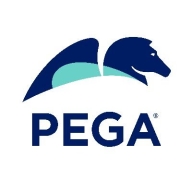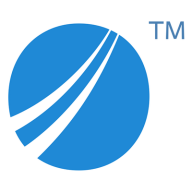

Pega Platform and TIBCO ActiveMatrix BPM are strong BPM solutions designed to meet varying business requirements. Pega Platform stands out due to its advanced case management and user-friendly no-code platform, offering an edge in ease of implementation and adaptability to change. TIBCO ActiveMatrix BPM, while strong in workflow stability, lacks in user interactivity.
Features: Pega Platform is noted for its rapid prototyping, flexible integration, and strong cloud capabilities, excelling in case management and digital transformation. It allows a no-code approach for enterprise projects. TIBCO ActiveMatrix BPM is valued for stability and drag-and-drop workflow creation, holding a mid-tier position in feature richness.
Room for Improvement:Pega Platform could enhance its integration capabilities, UI design, and cloud presence, facing issues with licensing complexity and deployment flexibility. TIBCO ActiveMatrix BPM needs to address integration with modern protocols and improve its cloud transition and modular architecture.
Ease of Deployment and Customer Service: Pega Platform offers diverse deployment options, including public, private, and hybrid clouds, with comprehensive support, although some users report varied responsiveness. TIBCO ActiveMatrix BPM primarily supports on-premises deployment with generally positive support, which could improve in issue resolution speed.
Pricing and ROI:Pega Platform's licensing is flexible but costly, delivering significant ROI through efficient processes and faster time-to-market, appealing to large enterprises. TIBCO ActiveMatrix BPM is expensive for large-scale deployments, offering recognized ROI for large firms but less so for smaller, rapidly scaling enterprises.
| Product | Market Share (%) |
|---|---|
| Pega Platform | 5.2% |
| TIBCO ActiveMatrix BPM | 0.7% |
| Other | 94.1% |


| Company Size | Count |
|---|---|
| Small Business | 9 |
| Midsize Enterprise | 15 |
| Large Enterprise | 68 |
| Company Size | Count |
|---|---|
| Small Business | 1 |
| Midsize Enterprise | 1 |
| Large Enterprise | 5 |
Pega Platform provides flexible business process management with a focus on rapid application development and automation through a low-code approach, enhancing efficiency across sectors.
Pega Platform is renowned for its ability to streamline operations with robust automation features, including robotic process automation and decision-making capabilities. Its intuitive interface and workflow management contribute to a reputation for enhancing business processes. Although users face challenges with integration limitations and high licensing costs, they benefit from rapid deployment and efficient process adaptations. The unified architecture reduces complexity, while case management and integration services support digital transformations in sectors such as banking, insurance, and healthcare.
What are the key features of Pega Platform?In industries like insurance, banking, healthcare, and government, Pega Platform is implemented to automate diverse workflows, supporting initiatives from claims processing to customer onboarding. Enterprises use Pega for case management and digital transformations, valuing its out-of-the-box integrations and real-time reporting capabilities to boost operational automation and enhance customer experiences.
We monitor all Business Process Management (BPM) reviews to prevent fraudulent reviews and keep review quality high. We do not post reviews by company employees or direct competitors. We validate each review for authenticity via cross-reference with LinkedIn, and personal follow-up with the reviewer when necessary.